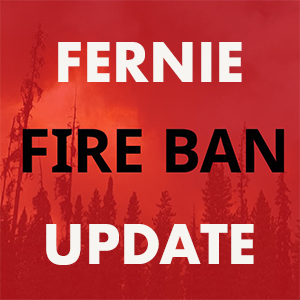Snowmobilers will be pounding the slopes for another few months and here are some Avalanche Awareness Tips that could save a life! This weekend the Fernie Snowmobile Association will be riding the Lizard Range at Island Lake Lodge.
These tips came from an Avalanche Safety pamphlet from Alaska. When you are heading into the area that you want to high mark, you should be alert to the following signs of instability:
1) Watch for recent avalanches – don’t play on similar, unreleased slopes.
2) Watch for amount of new snow or wind loading on leeward slopes.
3) Beware of rain. If it is raining it will weaken the snow quickly but will stabilize when refrozen.
4) Listen for whumping noises, you may even feel it when you get a group of sleds together in one spot. The extra load causes the collapse of a weaker buried layer of snow. This could be the layer that lets go and allows a slab to release. This collapse of a weak layer can actually travel a long way and release a large slope that you are not actually on. The release could have a track long enough to catch your group.
5) Watch for shooting cracks in the snow, this shows the snow is ripe for fracturing.
6) Does the snow have a hollow sound to it? This could indicate a buried weak layer.
7) Is the temperature warming quickly? This will weaken snow quickly.
Now that you have arrived in the area that you wish to high mark, here are some additional tips:
1) Choose slopes that have been stripped by wind (windward) over slopes that have been loaded (leeward). Snow that is rock hard can still avalanche if it is poorly bonded to layers below. Be wary of steep, smooth, leeward slopes.
2) Start out on the less steep slope angles and on the side of a slope instead of center-punching it. Do your first runs low and fast rather than maximizing your commitment and exposure by climbing as high as possible right away. If possible, do your first runs from the top down to get a feel for the snow and improve your chances of escape.
3) Always turn towards the edge of a slope rather than turning towards the middle.
4) If unsure of the snow stability, favour slopes that have recently avalanched over those that have not yet slid. You can still sled on unstable days — just chose slopes less than 25 degrees that are not connected to anything steeper.
5) Do not approach steep convex rollovers or aim right for a large rock or tree isolated in the middle of a steep slope unless you know the snow is stable. These are places where the snow pack is under greater stress, and thus where you are more likely to trigger a slide. Also be suspicious of steep area where the snow is shallow and weaker.
6) Avoid deadly terrain traps such as gullies, steep-sided creek bottoms, or slopes that end in depressions because of the high probability of a deep burial. Do not ride on slopes with cliffs below. Favour slopes that are fan- shaped at the bottom and do not have obstacles like rocks or trees to crash into. Concave bowls are nasty traps because the fracture propagates around the slope and all the debris collects at the bottom. This is why it is not uncommon for snowmobilers to be buried under 10 to 30 feet of debris.
7) Allow only one rider at a time on the slope. If a person gets stuck, DO NOT SEND A SECOND SLEDDER TO HELP!!!! Fact: Roughly 33% of snowmobile fatalities occur when a sled is stuck. About 34% involve more than one machine on a slope at the time of the avalanche. It is common for a second rider to turn above the stuck person and trigger an avalanche onto the sitting duck below.
8) Everyone should be watching the climber from a safe spot.
9) Always park well away from the bottom of steep slopes. Do not count on being able to outrun a slide. Get in the habit of parking parallel rather than one behind the other, have your machine pointing away from the avalanche path, and always have the kill switch up.
Hopefully these tips will help to educate sledders out there!


























